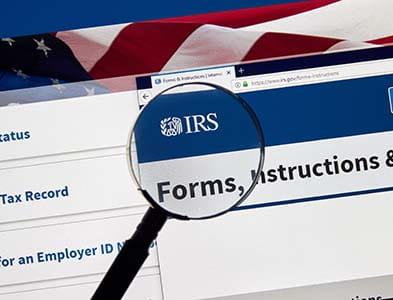IRS Announces New ERC Voluntary Disclosure Program
IRS Announces New ERC Voluntary Disclosure Program
On December 21, 2023, the Internal Revenue Service (IRS) introduced a Voluntary Disclosure Program to address erroneous Employee Retention Credit (ERC) claims and assist businesses in rectifying mistakes. This program is part of the IRS’ broader efforts to combat misleading marketing practices related to ERC claims and an influx of potentially dubious ERC claims.
What Is the Voluntary Disclosure Program?
The Voluntary Disclosure Program is designed to help businesses correct errors in their Employee Retention Credit claims. It allows employers who received ERC funds in error to voluntarily come forward and repay a portion of the credit they received.
According to IRS Announcement 2024-3, “The IRS believes that it would prevail in any litigation to recover credits or refunds of erroneous ERC claims and that the imposition of appropriate penalties and interest would be upheld by a court. For efficient tax administration reasons, however, the IRS is offering employers an opportunity to resolve their civil tax liabilities under this Voluntary Disclosure Program and avoid potential civil litigation, penalties, and interest.”
How Does the Voluntary Disclosure Program Work?
Through March 22, 2024, eligible participants can repay 80% of the ERC funds they received, and if interest was paid on the ERC refund claim, it doesn’t need to be repaid.
If a third party assisted or advised the employer with any portion of the ERC claim, the employer must provide the name, address, and phone number of the third party who assisted with the claim and a description of the services provided by the third party.
The IRS will not assert civil penalties related to underpayment of employment tax attributable to the claimed ERC against an employer that remits full payment of the 80% of the ERC claimed.
Who Is Eligible?
To qualify for the program, employers must meet the following criteria:
- They are not under criminal investigation, and they have not been notified that the IRS intends to commence a criminal investigation
- The IRS has not received information from a third party alerting the IRS to the participant’s noncompliance, nor has the IRS acquired information directly related to the noncompliance from an enforcement action
- They are no under an employment tax examination by the IRS for any tax period(s) for which they are applying for the Voluntary Disclosure Program
- They have not previously received notice and demand for repayment of all or part of the claimed ERC
How To Apply
Employers must complete Form 15434, “Application for Employee Retention Credit Voluntary Disclosure Program,” available on IRS.gov. The form should be submitted using the IRS Document Upload Tool.
Once an application is approved, employers will receive a closing agreement from the IRS and must repay 80% of the ERC funds, either online or by phone, using the Electronic Federal Tax Payment System (EFTPS).
If full repayment is not possible, employers can explore installment agreements, though penalties and interest may apply. Alternatively, they can consider obtaining a loan from a financial institution to avoid these additional costs.
In addition to the Voluntary Disclosure Program, the IRS is actively sending letters proposing tax adjustments to employers who received erroneous ERC payments. These letters serve as an incentive for businesses to participate in the disclosure program and avoid steeper penalties and risks associated with later IRS actions.
How Stout Can Help
At Stout, we have deep expertise in ERC, and we have developed the necessary tools, process, and government orders database to support employers navigating the ERC. We will evaluate an employer’s existing documentation and perform an independent analysis of their eligibility position to identify, manage, and mitigate risks so employers can make informed decisions pertaining to their ERC claim(s), including participation in the Voluntary Disclosure Program.





